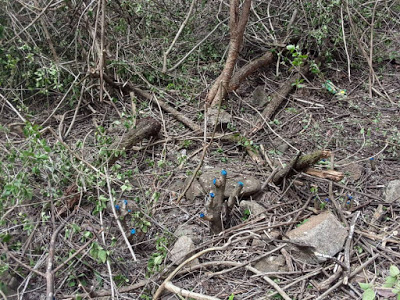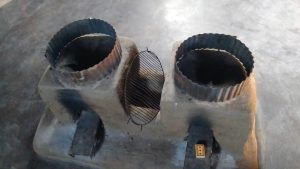…larger infestations projected due to changes in climate change
Moses Ziyambi
A takeover of the Great Zimbabwe Monuments by an infestation of lantana camara is being beaten back, thanks to money provided to the National Museums and Monuments of Zimbabwe (NMMZ) by the US Ambassador’s Fund for Cultural Preservation.
The money, which was released in late 2018, is being used partly to clear the lantana camara using both chemical and mechanical methods, cutting its stem to below 5cm above the ground.
A herbicide called Kaput is then applied onto the cut stem to destroy it and the root systems, thereby effectively destroying the plant.
Lantana camara is an invasive weed which crowds out desirable plant species and can negatively affect the ecological balance of an area. It is also toxic to grazers and herbivores including cattle.
Dense thickets of the plant have formed on many places within the precincts of Great Zimbabwe, blocking some pathways and threatening to choke the walls of the Hill Complex which provides a panoramic view of the World Heritage Site.
Before the intervention, the undesirable plant was spreading at an alarming pace, threatening to reduce the rich biodiversity around the monuments.
“The lantana had over the years obliterated the walls and platforms in that area. It is hoped that by the end of the project visitors will be able to better appreciate the terraced platforms and walls around the Hill Complex,” said Lovemore Mandima who is NMMZ Masvingo regional manager.
He said although lantana camara had a historical presence in the area, it had begun to get out of hand and overwhelm the monuments due to lack of funding for control measures.
“It’s both a labour and capital intensive exercise which requires a great deal of investment. The funding which was provided amounts to US$475 000 but it is meant to cover three components of the Great Zimbabwe National Monuments namely lantana camara control, conservation of dry stone walls and installation of an electronic wall monitoring system.
“We have made significant steps towards attaining those objectives despite the lull in activity caused by the outbreak of the coronavirus and the consequent lockdowns that followed. The fund was supposed to sustain those projects over two years but nothing happened for the whole of 2020 and we only resumed work at the beginning of November this year,” said Mandima.
Flora and Fauna Zimbabwe (FafloZim) director, Fidelicy Nyamukondiwa said it would be helpful if research was to be carried out to project the extent of the invasive species’ potential distribution under changed climatic conditions.
“It is unfortunate that there is virtually no research to determine climate change as a variable to the behaviour of lantana within our local environment. However, one could hypothesise that the rapid spread of the weed and its devastating impact on biodiversity is attributable to the changing climatic conditions,” said Nyamukondiwa.
Although lantana camara is highly adaptive and can survive many environmental conditions, research carried out elsewhere in the world using the CLIMEX modelling tool project further expansion of lantana camara in parts of Southern Africa.
The CLIMEX model describes responses of a species to climate by operating two modes which are to compare locations and to compare years. In the first mode, the response of a species in long-term average climates of different locations is compared, while climates over different years but in the same areas are compared in the second mode.






